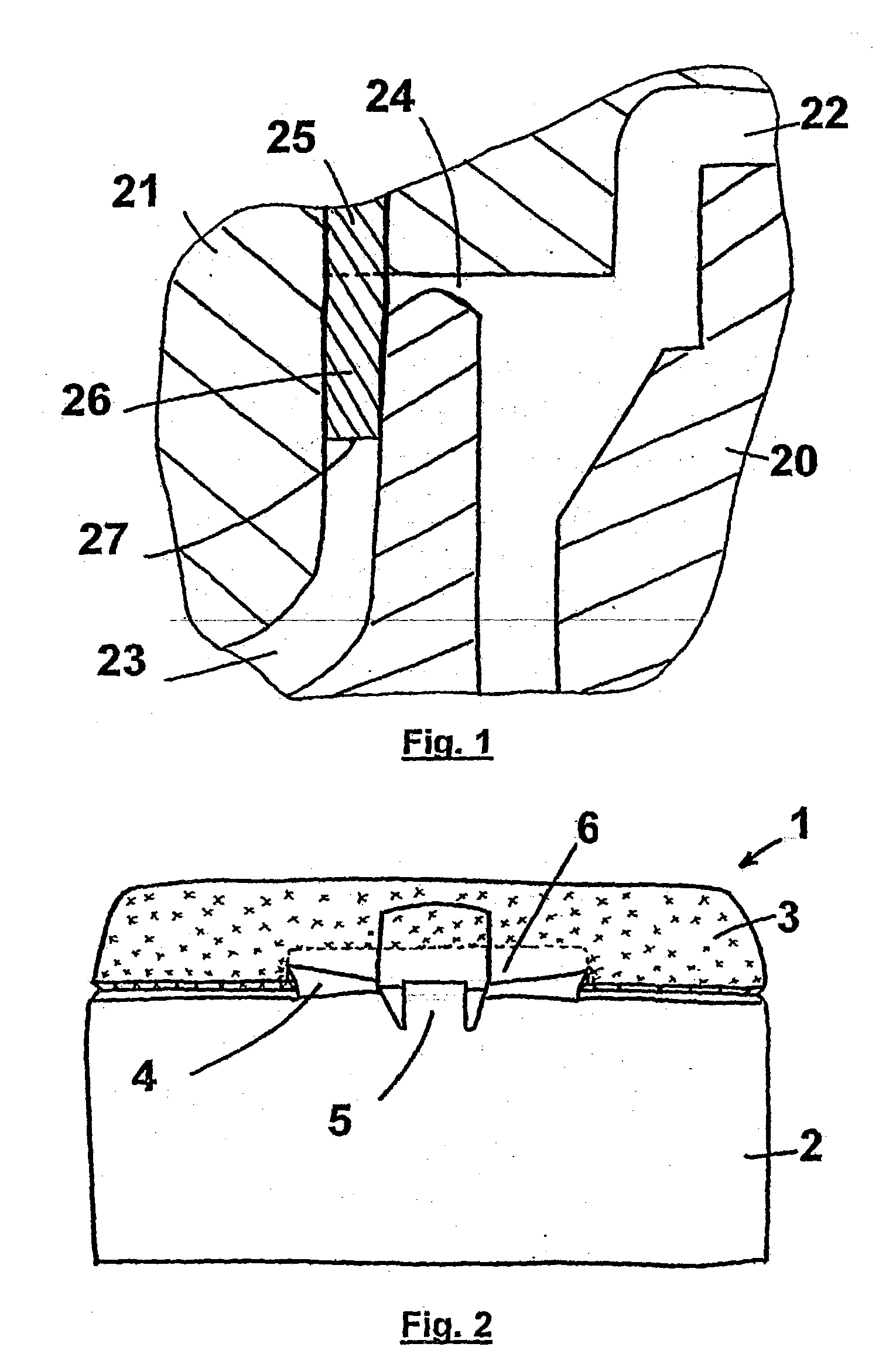Multicolour and multiple material injection moulding of a capsule provided with a cap pivoting about a hinge
a multi-material, capsule technology, applied in the direction of manufacturing tools, transportation and packaging, other domestic objects, etc., can solve the problems of limited decorative possibilities, thumb, and difficulty in using tubes, and achieve the effect of high melting temperature, efficient support, and increased surface area
- Summary
- Abstract
- Description
- Claims
- Application Information
AI Technical Summary
Benefits of technology
Problems solved by technology
Method used
Image
Examples
example 1
[0041] (FIGS. 1 and 2)
[0042] The bi-colour service capsule 1 comprises a cap 3 made of a first plastic material and a base 2 made of a second plastic material, both being connected together by hinge elements consisting of two film hinges 4 and a tensioning element 5.
[0043] In the conventional process used to make this two-colour capsule, the moulding equipment comprises two moulds, the first mould 21 and the second mould 20. A mobile part, the gate 25, slides insides the first mould 21, along the continuation of the approximately vertical part of the cavity 23 used for moulding the cap, and the front wall 27 of the gate must descend deeply into the cavity 23, to several millimetres below the cavity 24 corresponding to the hinge, leaving a zone 26 not filled by the plastic material of the cap.
[0044] The sequential dual injection process using this moulding equipment and in which the plastic material (transparent polypropylene) of the cap is injected before the opaque polypropylene of...
example 2
[0045] (FIGS. 3, 4 and 5)
[0046] The two-colour service capsule 11 comprises a base 12 made of a first plastic material and a cap 13 made of a second plastic material, both being connected to each other by hinge elements consisting of two film hinges 14 and a tensioning element 15.
[0047] In the process according to the invention used to make this two-colour capsule 11, the moulding equipment comprises two moulds, the first mould 31 and the second mould 30. The first step is to inject the base and then the cap.
[0048] A mobile part called the gate 35 is free to slide inside the first mould 31, along the continuation of the approximately vertical part of the cavity 33 used to mould the cap, and the front wall 37 of the gate does not descend deeply into the cavity 33. The sections in FIGS. 4 and 5 made along C-C and T-T respectively, show that the gate 35 is thicker at the film hinge than at the tensioning element. The heights of the fasteners of the hinge elements have been increased an...
PUM
| Property | Measurement | Unit |
|---|---|---|
| Fraction | aaaaa | aaaaa |
| Angle | aaaaa | aaaaa |
| Thickness | aaaaa | aaaaa |
Abstract
Description
Claims
Application Information
 Login to View More
Login to View More - R&D
- Intellectual Property
- Life Sciences
- Materials
- Tech Scout
- Unparalleled Data Quality
- Higher Quality Content
- 60% Fewer Hallucinations
Browse by: Latest US Patents, China's latest patents, Technical Efficacy Thesaurus, Application Domain, Technology Topic, Popular Technical Reports.
© 2025 PatSnap. All rights reserved.Legal|Privacy policy|Modern Slavery Act Transparency Statement|Sitemap|About US| Contact US: help@patsnap.com



